- Home
- Charlotte Bronte
Villette (Barnes & Noble Classics Series)
Villette (Barnes & Noble Classics Series) Read online
Table of Contents
From the Pages of Villette
Title Page
Copyright Page
Charlotte Brontë
The World of Charlotte Brontë and Villette
Introduction
Villette
VOLUME ONE
CHAPTER 1 - Bretton
CHAPTER 2 - Paulina
CHAPTER 3 - The Playmates
CHAPTER 4 - Miss Marchmont
CHAPTER 5 - Turning a New Leaf
CHAPTER 6 - London
CHAPTER 7 - Villette
CHAPTER 8 - Madame Beck
CHAPTER 9 - Isidore
CHAPTER 10 - Dr. John
CHAPTER 11 - The Portresse’s Cabinet
CHAPTER 12 - The Casket
CHAPTER 13 - A Sneeze Out of Season
CHAPTER 14 - The Fête
CHAPTER 15 - The Long Vacation
VOLUME TWO
CHAPTER 16 - Auld Lang Syne
CHAPTER 17 - La Terrasse
CHAPTER 18 - We Quarrel
CHAPTER 19 - The Cleopatra
CHAPTER 20 - The Concert
CHAPTER 21 - Reaction
CHAPTER 22 - The Letter
CHAPTER 23 - Vashti
CHAPTER 24 - M. de Bassompierre
CHAPTER 25 - The Little Countess
CHAPTER 26 - A Burial
CHAPTER 27 - The Hôtel Crécy
VOLUME THREE
CHAPTER 28 - The Watchguard
CHAPTER 29 - Monsieur’s Fête
CHAPTER 30 - M. Paul
CHAPTER 31 - The Dryad
CHAPTER 32 - The First Letter
CHAPTER 33 - M. Paul Keeps His Promise
CHAPTER 34 - Malevola
CHAPTER 35 - Fraternity
CHAPTER 36 - The Apple of Discord
CHAPTER 37 - Sunshine
CHAPTER 38 - Cloud
CHAPTER 39 - Old and New Acquaintance
CHAPTER 40 - The Happy Pair
CHAPTER 41 - Faubourg Clotilde
CHAPTER 42 - Finis
Endnotes
Inspired by
Comments & Questions
For Further Reading
From the Pages of Villette
I, Lucy Snowe, plead guiltless of that curse, an overheated and discursive imagination. (page 15)
A strong, vague persuasion, that it was better to go forward than backward, and that I could go forward—that a way, however narrow and difficult, would in time open, predominated over other feelings. (page 52)
I felt I was getting on; not lying the stagnant prey of mould and rust, but polishing my faculties and whetting them to a keen edge with constant use. Experience of a certain kind lay before me, on no narrow scale. (page 91)
Madame knew something of the world; madame knew much of human nature. I don’t think that another directress in Villette would have dared to admit a ‘jeune homme’ within her walls; but madame knew that by granting such admission, on an occasion like the present, a bold stroke might be struck, and a great point gained. (page 162)
‘You have no relations; you can’t call yourself young at twenty-three; you have no attractive accomplishments—no beauty. As to admirers, you hardly know what they are; you can’t even talk on the subject: you sit dumb when the other teachers quote their conquests. I believe you never were in love, and never will be: you don’t know the feeling, and so much the better, for though you might have your own heart broken, no living heart will you ever break. Isn’t it all true?’ (pages 164—165)
There are human tempers, bland, glowing, and genial, within whose influence it is as good for the poor in spirit to live, as it is for the feeble in frame to bask in the glow of noon. (page 223)
I shut the garret-door; I placed my light on a doddered and mouldy chest of drawers; I put on a shawl, for the air was ice-cold; I took my letter, trembling with sweet impatience; I broke its seal. (page 276)
‘What am I to do with this daughter or daughterling of mine? She neither grows in wisdom nor in stature.’ (page 315)
I like to see flowers growing, but when they are gathered, they cease to please. I look on them as things rootless and perishable; their likeness to life makes me sad. I never offer flowers to those I love; I never wish to receive them from hands dear to me. (page 381)
‘My book is this garden; its contents are human nature—female human nature. I know you all by heart.’ (page 411)
‘Monsieur, I tell you every glance you cast from that lattice is a wrong done to the best part of your own nature. To study the human heart thus, is to banquet secretly and sacrilegiously on Eve’s apples. I wish you were a Protestant.’ (page 414)
‘Papa, they are not letters to send to the post in your letter-bag; they are only notes, which I give now and then into the person’s hand, just to satisfy.’ (page 486)
Villette is one blaze, one broad illumination; the whole world seems abroad; moonlight and heaven are banished: the town, by her own flambeaux, beholds her own splendour—gay dresses, grand equipages, fine horses and gallant riders throng the bright streets. (page 509)
Man cannot prophecy. Love is no oracle. Fear sometimes imagines a vain thing. (page 552)
Published by Barnes & Noble Books 122 Fifth Avenue
New York, NY 10011
www.barnesandnoble.com/classics
Villette was first published in three volumes in 1853.
Published in 2005 by Barnes & Noble Classics with new Introduction, Notes, Biography, Chronology, Inspired By,
Comments & Questions, and For Further Reading.
Introduction, Notes, and For Further Reading
Copyright © 2005 by Laura Engel.
Note on Charlotte Brontë, The World of Charlotte Brontë and Villette, Inspired by Villette, and Comments & Questions Copyright © 2005 by Barnes & Noble, Inc.
All rights reserved. No part of this publication may be reproduced or transmitted in any form or by any means, electronic or mechanical, including photocopy, recording, or any information storage and retrieval system, without the prior written permission of the publisher.
Barnes & Noble Classics and the Barnes & Noble Classics colophon are trademarks of Barnes & Noble, Inc.
Villette
ISBN 1-59308-316-5
eISBN : 978-1-411-43342-7
LC Control Number 2004111989
Produced and published in conjunction with: Fine Creative Media, Inc. 322 Eighth Avenue New York, NY 10001
Michael J. Fine, President and Publisher
Printed in the United States of America
QM
1 3 5 7 9 10 8 6 4 2
FIRST PRINTING
Charlotte Brontë
Charlotte Brontë was born on April 21, 1816, in Thornton, Yorkshire, in the north of England, the third child of the Reverend Patrick Brontë and Maria Branwell Brontë. In 1820 the family moved to neighboring Haworth, where Reverend Brontë was offered a lifetime curacy. The following year Mrs. Brontë died of cancer, and her sister, Elizabeth Branwell, moved in to help raise the six children. The four eldest sisters—Charlotte, Emily, Maria, and Elizabeth—attended Cowan Bridge School, until Maria and Elizabeth contracted what was probably tuberculosis and died within months of each other, at which point Charlotte and Emily returned home. The four remaining siblings—Charlotte, Branwell, Emily, and Anne—played on the Yorkshire moors and dreamed up fanciful, fabled worlds, creating a constant stream of tales, such as the “Young Men” plays (1826) and “Our Fellows” (1827).
Reverend Brontë kept his children abreast of current events; among these were the 1829 parliamentary debates centering on the Catholic Question, in which the Duke of Wellington
was a leading voice. Charlotte’s awareness of politics filtered into her fictional creations, as in the siblings’ saga The Islanders (1827), about an imaginary world peopled with the Brontë children’s real-life heroes, in which Wellington plays a central role as Charlotte’s chosen character.
Throughout her childhood, Charlotte had access to the circulating library at the nearby town of Keighley. She knew the Bible and read the works of Shakespeare, George Gordon, Lord Byron, and Sir Walter Scott, and she particularly admired William Wordsworth and Robert Southey. In 1831 and 1832, Charlotte attended Miss Wooler’s school at Roe Head, and she returned there as a teacher from 1835 to 1838. After working for a couple of years as a governess, Charlotte, with her sister Emily, traveled to Brussels to study, with the goal of opening their own school, but this dream did not materialize once she returned to Haworth in 1844.
In 1846 the sisters published their collected poems under the pen names Currer (Charlotte), Ellis (Emily), and Acton (Anne) Bell. That same year Charlotte finished her first novel, The Professor, but it was not accepted for publication. However, she began work on Jane Eyre, which was published in 1847 and met with instant success. Though some critics saw impropriety in the core of the story—the relationship between a middle-aged man and the young, naive governess who works for him—most reviewers praised the novel, helping to ensure its popularity. One of Charlotte’s literary heroes, William Makepeace Thackeray, wrote her a letter to express his enjoyment of the novel and to praise her writing style, as did the influential literary critic G. H. Lewes.
Following the deaths of Branwell and Emily Brontë in 1848 and Anne in 1849, Charlotte made trips to London, where she began to move in literary circles that included such luminaries as Thackeray, whom she met for the first time in 1849; his daughter described Brontë as “a tiny, delicate, serious, little lady.” In 1850 she met the noted British writer Elizabeth Gaskell, with whom she formed a lasting friendship and who, at the request of Reverend Brontë, later became her biographer. Charlotte’s novel Villette was published in 1853.
In 1854 Charlotte married Arthur Bell Nicholls, a curate at Haworth who worked with her father. Less than a year later, however, she fell seriously ill, perhaps with tuberculosis, and she died on March 31, 1855. At the time of her death, Charlotte Brontë was a celebrated author. The 1857 publication of her first novel, The Professor, and of Gaskell’s biography of her life only heightened her renown.
The World of Charlotte Brontë and Villette
1816 Charlotte Brontë is born on April 21 in Thornton, England , the third of six children of the Reverend Patrick and Maria Branwell Brontë.
1817- 1820 Charlotte’s younger siblings, Patrick Branwell, Emily, and Anne, are born.
1820 The Brontë family moves to Haworth, where Reverend Brontë has been offered a lifetime curacy.
1821 Charlotte’s mother, Maria, dies, and her sister, Elizabeth Branwell, moves into the Brontë household to help raise the six young children.
1824 Charlotte and Emily, along with their older sisters, Maria and Elizabeth, attend Cowan Bridge School.
1825 Maria and Elizabeth contract what is probably tuberculosis and die. Charlotte and Emily are pulled out of school to return home to Haworth.
1826 The four surviving siblings create the “Young Men” plays, the first of their imaginative fictional writings, which are followed in 1827 by “Our Fellows” and “The Islanders.”
1831- 1832 Charlotte attends Miss Wooler’s school at Roe Head.
1835 Charlotte returns to Roe Head as a teacher. Emily attends as a student, but stays only three months; Anne takes her place, studying there until 1837.
1837 Charlotte writes to Robert Southey, the British poet laureate , to ask his opinion of her poetry. His disheartening response implies that while Charlotte displays what Wordsworth calls “faculty of verse,” this is nothing extraordinary in a time of so many decent poets. He goes on to declare that women have no business in literature.
1838 Charlotte resigns from her teaching position at Roe Head.
1839- 1841 She works as a governess, first in Lothersdale and later in Rawdon.
1842 Charlotte and Emily travel to Brussels to study at Pensionnat Héger, where they read, among other things, works by French and German Romantics. They stay less than a year, returning to Haworth because their aunt Elizabeth Branwell has died.
1843- 1844 Charlotte spends a second year at the Pensionnat in Brussels honing her French and German language skills. She develops a strong emotional attachment to her married employer and former teacher, Constantin Héger, a situation that may have informed the Jane Eyre love story. Charlotte returns to Haworth in January 1844.
1846 In February, Charlotte sends a manuscript, Poems by Currer , Ellis, and Acton Bell (the pen names of Charlotte, Emily, and Anne Brontë, respectively), to the London publisher Aylott and Jones. The poems are published in May at the sisters’ expense; only two copies are sold. In June Charlotte completes her first novel, The Professor. By the end of the year she has begun work on Jane Eyre.
1847 While Charlotte’s manuscript for The Professor is rejected by various publishers, her sisters’ novels—Anne’s Agnes Grey and Emily’s Wuthering Heights—are accepted for publication by Thomas Cautley Newby. Charlotte approaches another publisher, Smith, Elder and Co., with Jane Eyre, which is published in October to instant success , overshadowing the publication in December of her sisters’ novels and surpassing them in acclaim. All three sisters are still publishing under their “Bell” pen names.
1848 Amid growing rumors that there is only one “Bell” writer, Charlotte and Anne travel to London to prove otherwise. Charlotte’s publisher, George Smith, learns the truth of the Brontës’ identities but is sworn to protect their secret. In September, Branwell Brontë dies after a sustained bout of depression, alcoholism, and drug use; in December , Emily dies of tuberculosis.
1849 In May, Anne dies of tuberculosis. Charlotte’s novel Shirley is published by Smith, Elder. In November, Charlotte travels again to London, this time as a well-known author. She meets one of her literary idols, William Makepeace Thackeray.
1850 Charlotte returns to London. In August, she travels to Windermere, where she meets the writer Elizabeth Gaskell, with whom she becomes close friends. In December , Charlotte writes the prefaces and biographical notes for her sisters’ novels; she reveals the true identities of the “Bells” and works to protect the posthumous reputations of Emily and Anne, who have received some criticism for their “coarse” and “nihilistic” writings. Depressed by the loss of her siblings, Charlotte writes little fiction this year but reads Jane Austen for the first time; she disparages Austen’s novels as shrewd and observant, but without sentiment.
1853 Charlotte’s novel Villette is published in January. In April, she spends a week in Manchester with Elizabeth Gaskell; in September, Gaskell visits her at Haworth.
1854 In June, Charlotte marries Arthur Bell Nicholls, whom she has known since 1845, when he began work as a curate at Haworth.
1855 Charlotte is happily married for a few months, but early in the year she becomes ill; she dies on March 31.
1857 Elizabeth Gaskell’s Life of Charlotte Brontë is published, as is Charlotte’s first novel, The Professor, though the latter’s release is partly obscured by the enormous interest readers show in Gaskell’s work.
1928 In August, Haworth Parsonage opens to the public as the Brontë Parsonage Museum.
Introduction
I think if a good fairy were to grant me the choice of a gift,
I would say—grant me the power to walk invisible; though
certainly I would add—accompany it by the grace never to
abuse the privilege.
—Charlotte Brontë
When Charlotte Brontë began writing Villette, her last novel, she was no longer hiding under the anonymous pen name of Currer Bell, the celebrated author of Jane Eyre. Anne Thackeray Ritchie, the daughter of novelist William Thackeray
, recalled the first time she met the mysterious writer at a small soiree hosted by her father. “After a moment’s delay the door opens wide, and the two gentlemen come in leading a tiny, delicate, serious, little lady, pale with fair straight hair and steady eyes.... She enters in mittens, in silence, in seriousness, our hearts are beating with wild excitement. This then is the authoress, the unknown power whose books have sent all London talking, reading, and speculating” (quoted in Smith, ed., The Letters of Charlotte Brontë, vol. 2, p. 60; see “For Further Reading”). Much to Anne’s dismay, the evening would be largely disappointing. Although Charlotte Brontë looked the part of the demure heroines she so brilliantly imagined, she lacked their fiery spark. She refused to chat with the ladies, became embarrassed and awkward, and spent most of the evening cowering in a comer. Anne reported that her father was so bored that he slipped away before the night was over and went to his club. The quiet authoress may have been a literary genius, but she was not much of a public celebrity.
Lucy Snowe, the heroine of Villette, is equally wary of public presentations and displays. Cautious, determined, caustic, and passionate, Lucy is a study in contradictions, much like Brontë herself. In her innovative study The Brontë Myth, Lucasta Miller suggests that it has been difficult for scholars, biographers, and literary critics to separate the romanticized history of the doomed Brontë family from the thematic content of their literary works. Charlotte’s background has all the ingredients of a nineteenth-century novel: an absent mother; a serious, religious father; a semi-secluded life on the moors; a lively, creative childhood interrupted by the deprivations of boarding school (later immortalized in Jane Eyre); studying abroad in Brussels (the backdrop for Villette and the inspiration for The Professor); and sudden fame (with the publication of Jane Eyre), followed by a series of tragedies and disappointments. But unlike the mythic portrayal of her initiated by her first biographer, novelist Elizabeth Gaskell, Brontë was not just the waifish, secluded visionary others imagined her to be.

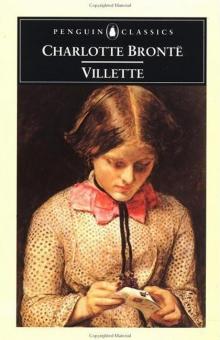 Villette
Villette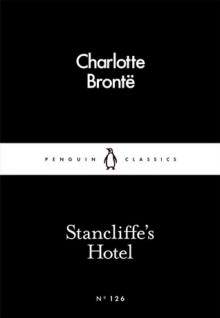 Stancliffe's Hotel
Stancliffe's Hotel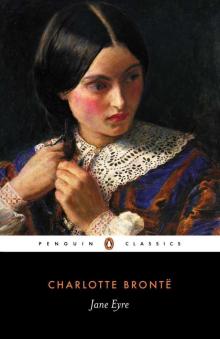 Jane Eyre
Jane Eyre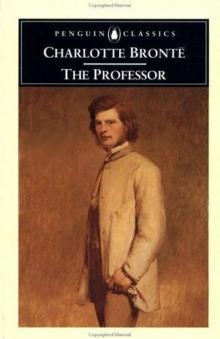 The Professor
The Professor Shirley
Shirley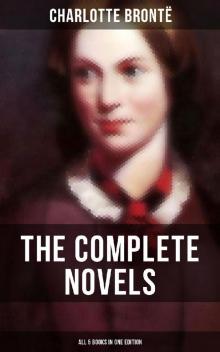 The Complete Novels of Charlotte Brontë
The Complete Novels of Charlotte Brontë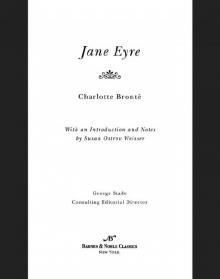 Jane Eyre (Barnes & Noble Classics Series)
Jane Eyre (Barnes & Noble Classics Series)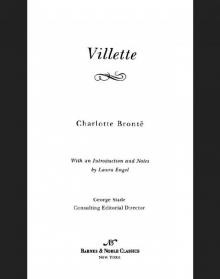 Villette (Barnes & Noble Classics Series)
Villette (Barnes & Noble Classics Series)